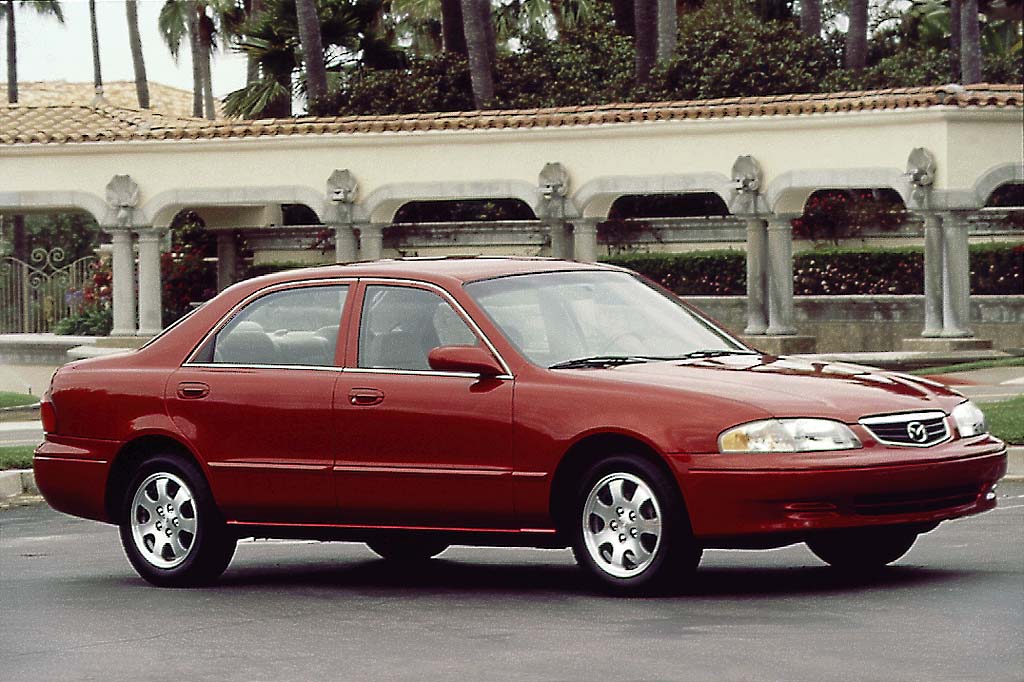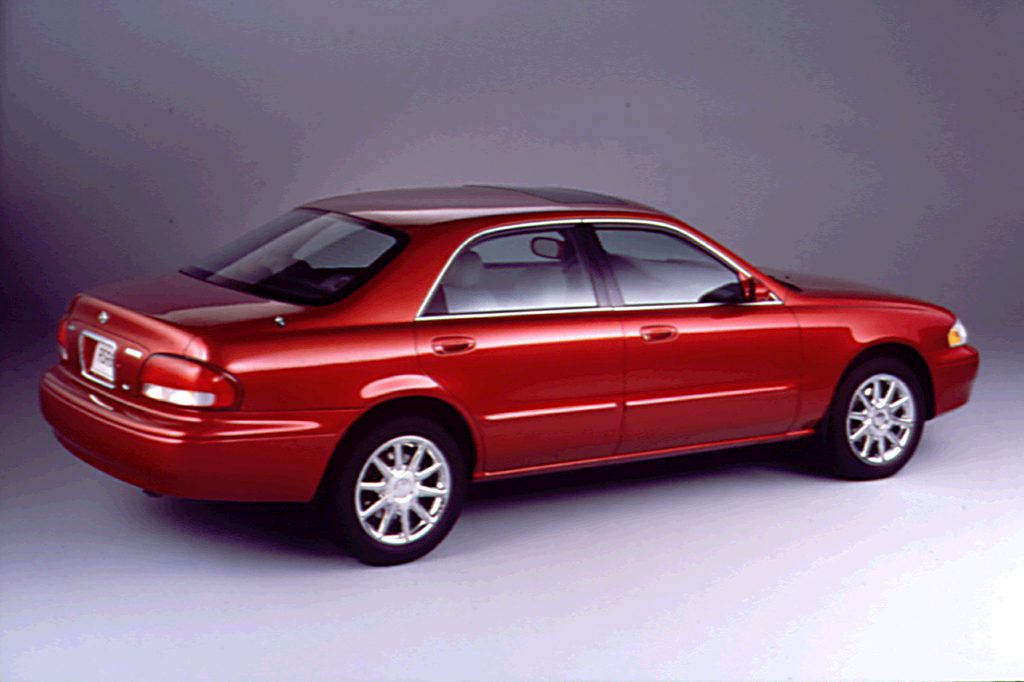| Midsize car; Built in USA |
|
|
| Good condition price range: $1,600 – $3,800* |

2000 Mazda 626 LX

2001 Mazda 626 LX

2000 Mazda 626 interior

1998 Mazda 626

1998 Mazda 626 ES
| Pros: |
|
| Cons: |
|
A competent family 4-door, more mainstream than its predecessor, the 626 lost some of its sporting flair but still tops most rivals–especially with the V6 engine. LX versions offer the best combination of features and value in this competitive segment. Because it’s often overlooked, prices are appealing.
Overview
Mazda redesigned its long-time top seller for 1998. This was the first 626 sedan to have no coupe counterpart, as the Mazda MX-6 and related Ford Probe were discontinued.
Four models again went on sale: DX, LX, LX-V6, and ES-V6. DX and LX versions again used a 2.0-liter four-cylinder engine, but with 9 extra horsepower (now 125). Output of the available 2.5-liter V6 rose by 6 horsepower, to 170. All models could have either a five-speed manual transmission or optional four-speed automatic.
Wheelbase grew by 2 inches, and the sedan measured 2.4 inches longer overall and about half an inch wider. Curb weight rose modestly. Sedans with the V6 engine included traction control and an engine immobilizer. All-disc antilock braking was optional with V6 power.
Yearly Updates
| 1999 626 Mazda shuffled equipment and models for 1999, dropping the base DX sedan and adding a four-cylinder version of the top-line, leather-trimmed ES. The four-cylinder LX, LX-V6 and ES-V6 continued. Keyless entry now was standard on all models, as were variable-intermittent wipers and a power antenna. A manual driver’s-seat height adjuster was newly standard for all but the ES-V6, which had a power driver’s seat. |
| 2000 626 Front side airbags joined the option list for 2000, included in an ABS option group, and the four-cylinder engine gained 5 horsepower. All but the four-cylinder LX had all-disc brakes. Antilock braking was optional across the board, including traction control when installed in a V6 sedan. The four-cylinder LX gained 15-inch wheels, while 16-inch alloy wheels replaced 15-inchers on the ES-V6 (and were optional for the LX-V6). All models added rear-seat heater ducts. Heated mirrors now were standard on the ES-V6, optional on others. |
| 2001 626 Mazda’s family sedan was essentially unchanged for 2001. |
| 2002 626 There were no significant changes for 2002, the 626’s final year before being replaced by the new Mazda 6. |
